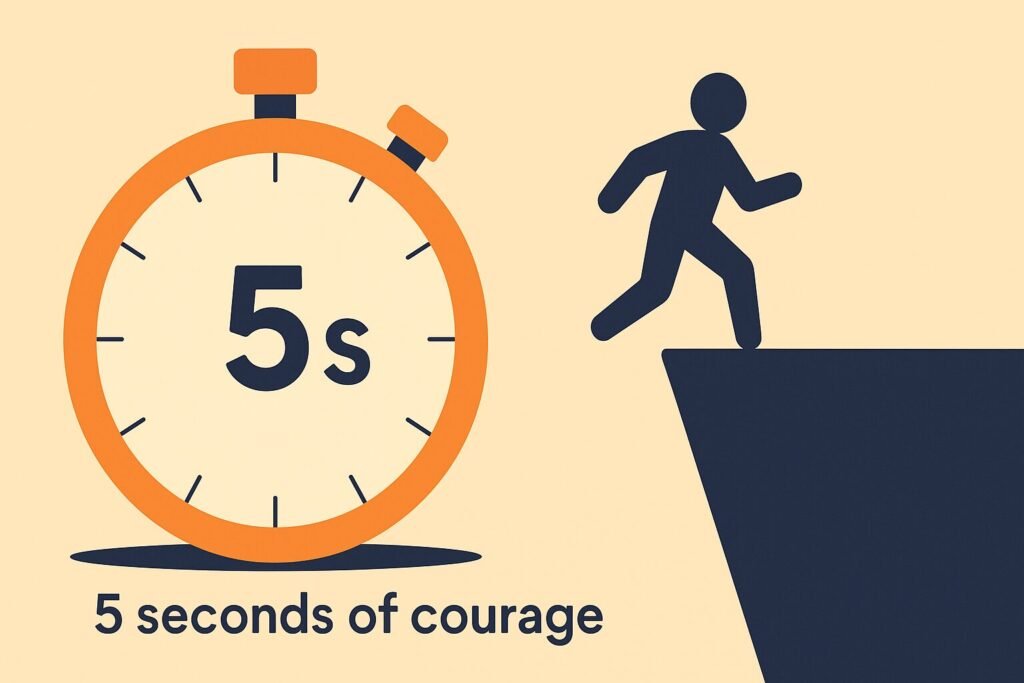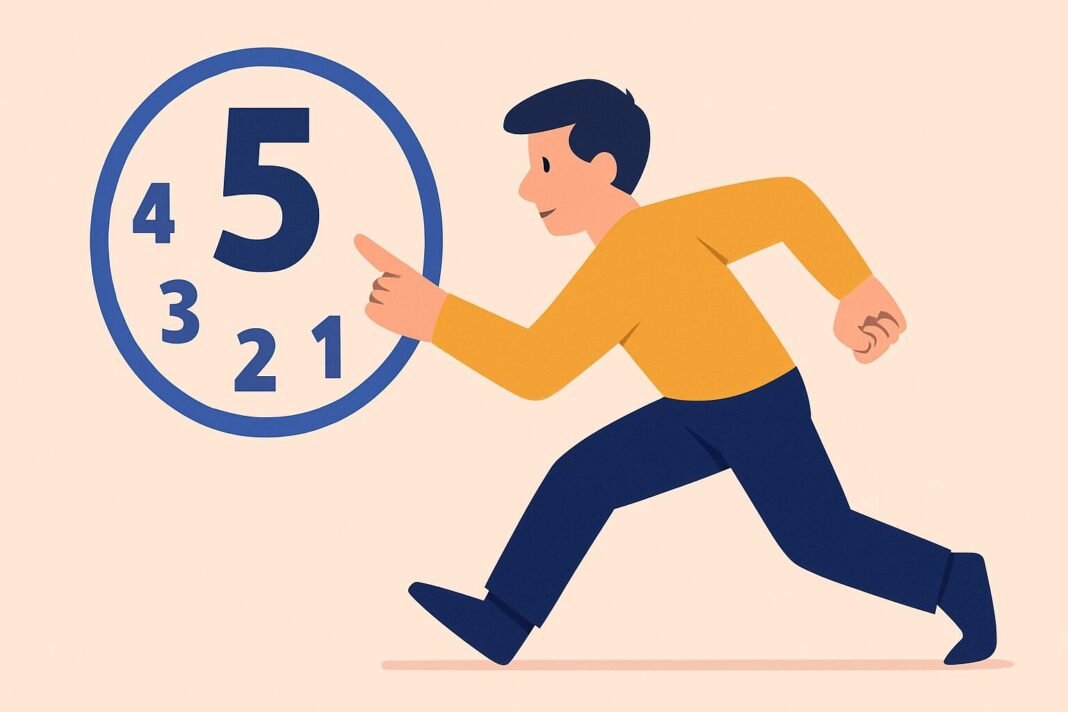
Ever found yourself staring at a task you know you need to do, but somehow, you just… don’t? You open Instagram, skim another video, check your email for the fourth time in five minutes, or reorganize your desktop folders as if they hold the meaning of life. We’ve all been there.
Distraction is modern-day quicksand. But what if there was a ridiculously simple, five-second habit that could jolt you back into momentum?
This isn’t a gimmick. It’s a brain hack that leverages urgency, pattern interruption, and the psychology of action. And it might be the tiniest productivity habit you’ll ever try.
Table of Contents
The 5-Second Countdown Rule (What It Is and How It Works)
This tip was popularized by Mel Robbins in her best-selling book, The 5 Second Rule. The concept is as follows:
When you need to act, and you’re feeling resistance, simply count backward:
“5… 4… 3… 2… 1… Go.”
Then take action. Any action. Stand up. Hit send. Open the doc. Close the tab. Write the first word.
That’s it.
No complicated setup. No app required. Just a simple countdown that launches you into motion. The power isn’t in the act itself. It’s in the interruption.
Robbins compares it to a rocket launch sequence. You’re triggering your brain to override hesitation and ignite your “go” system before self-doubt has a chance to sabotage you.
Why It Actually Works (Brain Science Behind the Habit)
Let’s look at why this works:
- Interrupts the Mental Loop of Avoidance
- When you hesitate, your prefrontal cortex kicks in and starts evaluating danger, failure, and effort. This can kill momentum. The 5-second rule creates a small window before that doubt system engages.
- Triggers a Sense of Urgency
- Countdowns are primal. Your brain has evolved to associate them with immediate action, like jumping before a closing gate or starting a race. Counting backward helps override hesitation loops.
- Activates the Prefrontal Cortex
- According to Robbins, initiating the countdown itself activates the decision-making part of the brain. That activation makes you more likely to follow through on intentional behavior instead of reacting passively.
- Helps Break Habitual Loops
- If you’re always reaching for your phone at the first sign of discomfort, the countdown offers a brief moment of awareness, a pattern interrupt that gives you space to choose something different.
When to Use the 5-Second Countdown

This tiny tool is surprisingly versatile. Try it:
- Before starting a task you keep procrastinating
- When switching from passive to active mode (scrolling → working)
- Before saying something difficult in a conversation
- When getting out of bed (especially during cold mornings)
- Before taking a cold shower or starting a workout
- When you notice your attention drifting during a meeting or study session
Basically, anytime you feel the tug of resistance, self-doubt, or inertia, that’s your cue.
Real-Life Scenarios (The Countdown in Action)
Scenario 1: The Morning Drag You wake up. You hit snooze. Again. Instead, the next morning, try: “5… 4… 3… 2… 1…” Sit up. No thinking. No excuses.
Scenario 2: The Blank Page Paralysis You’re supposed to write that report/article/email. But instead, you scroll. Try: “5… 4… 3… 2… 1…” Open the doc and write one sentence. Momentum will follow.
Scenario 3: Doomscrolling Spiral You open Instagram without thinking. Mid-scroll, you realize what you’re doing. Instead: “5… 4… 3… 2… 1…” Close the app. Turn over your phone. Breathe.
How to Make It Stick (Micro-Habit Building Tips)
- Pair It With a Trigger: Link the countdown to common situations (e.g., checking your phone, hesitating to start work).
- Use Physical Cues: Say it out loud. Count with your fingers. Make it embodied.
- Don’t Aim for Perfection: The goal isn’t to be flawless, it’s to act.
- Track Wins: Keep a note of how often you beat resistance with this technique. Small wins reinforce the habit.
Why Simple Beats Fancy

Most productivity systems need a manual. This one fits on a Post-it.
It doesn’t require motivation, deep journaling, or meditation. It just requires five seconds of courage and a decision to move.
It won’t fix everything, but it’s a fantastic tool to have in your pocket when your brain wants to stall.
Challenge: Try It Now
Pick one thing you’ve been avoiding for the last 30 minutes (or 3 days).
Say it with me:
5… 4… 3… 2… 1… GO.
Do the first step. That’s all it takes.
Want to stack this with other mini focus tricks? → Read next: How to Regain Focus in 5 Minutes or Less
For more brain-based clarity habits, subscribe to Daily Mind Boost, where small steps turn into big mental wins.





